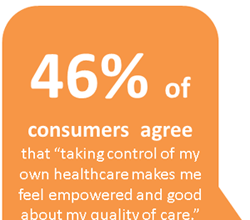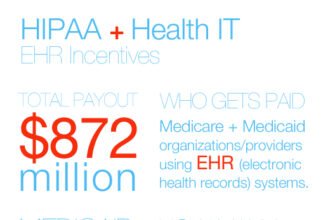Today’s healthcare consumer is looking for personalized, actionable experiences online —here’s how to make sure your ads meet their expectations. As the internet’s role in the path to treatment has expanded in recent years, the opportunity for medical practices and hospitals to attract new patients has grown in step. Last year, Google fielded more than 28 billion health-related queries in the U.S. alone, and approximately 25% of those searches were ultimately resolved by an advertisement. However, this massive shift in consumer preferences has spawned a feeding frenzy of medical marketers vying for patients’ attention online, which in turn has ramped up the level of competition substantially. Unsurprisingly, the average cost-per-click (CPC) for medical search engine ads is a full $0.85 higher than the average across all other verticals, at $3.17. The point is, the opportunity to succeed is certainly there for the taking, but only for those who know how to reach, engage, and retain new patients online. And this opportunity should not be overlooked: after keyword targeting, effective messaging is arguably one of the most critical components of any digital ad campaign. Recent research confirms this point: 75% of consumers say they want personalized ad experiences and offers, and, unsurprisingly, this approach typically generates 10 times as many clicks as more generalized campaigns. Dedicate your marketing efforts to generating more compelling and actionable ad copy, and the result will be a substantial increase in both the quantity and quality of traffic to your site.
Getting Started
In order to determine which ads are most effective, it’s a good idea to create multiple iterations of the same basic message while exchanging various keywords and phrasings, then split test those variations against one another. Over time, you should be able to pinpoint which approach tends to convert at the highest rate, and use the information to optimize current and future campaigns. Of course, success will largely depend on your ability to write concisely and clearly about your medical organization — in effect, you have a relatively limited window to convey a number of key pieces of information, thereby convincing a prospective patient to choose you over your competitor. Here are a few key areas to focus on in order to craft effective and compelling ads that will attract your target audience and encourage them to convert. The Headline Your headline is the first thing a patient sees, and should, therefore, strike a delicate balance between two essential objectives:
- Match the exact needs and demographics of the viewer of the ad
- Distinguish itself from other ads trying to match those same needs
While this balance may seem impossible, crafting a headline that’s both relevant and unique is actually relatively easy — the trick is to not overthink it. To maintain a high degree of relevance and visibility amongst your target audience, it’s a good idea to feature the keyword that is most central to your organization in your headline. While that keyword may be something like “hospital” or “pediatrics,” both of which are too competitive to be worth actually bidding on, it serves as an indicator for Google’s algorithm that your hospital or practice is offering what an individual patient is searching for. Keep in mind that the first line of your search engine results page (SERP) listing will be pulled from your headline and will be limited to about 55 characters, including spaces. Distinguishing yourself from the rest of the pack will obviously require a bit of market research, meaning you’ll have to compile and review competitor ads to find what’s already been done. For example, if you see a headline that reads, “Little Rock Pediatrician,” try changing your ad to something like “Best Pediatrician in Little Rock” or even “Little Rock — Pediatrician.” Don’t be afraid to build upon what’s already been done, and more importantly, to keep testing and retesting variants on your original copy. Finding the perfect headline that’s both relevant enough to show up in patient searches and unique enough to grab their attention will likely give your CTR a serious boost.
Description Lines
The description line or subheading offers you a better opportunity to use plenty of valuable search terms, but that doesn’t mean you should be tempted into “keyword stuffing.” Contextualize the assertion being made by your headline to the best of your abilities while using any important keywords that naturally fit into the sentence. Again, both users and Google’s algorithm can detect copy that’s being written to game the system, so always aim for clear, informative messaging above all else.
Display URL
A display URL is the green URL address that sits directly beneath the headline in your text ads. While it may be a real address, it does not actually function as a hyperlink. The display URL must feature your site’s root domain name, but if you want, you can choose to add a subdomain or subfolder, where you can restate and emphasize the name of your practicing physician or hospital, your location, or your specialty.
Generating Real Results
Put simply, even with the proper approach to keyword targeting and a massive AdWords budget, your campaign isn’t going to generate meaningful results for your practice if your ads don’t compel your target audience to take action. By placing an emphasis on personalization and offering patients genuinely helpful and relevant information, you’ll see a huge uptick in both your site traffic and your conversion rate — in other words, just give your prospective patients what they’re looking for.








